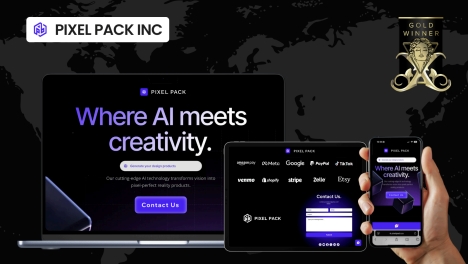By: Anne Schulze
Fang Nan’s Journey: From Strategic Design and Management to AI-Driven Entrepreneurship
As the founder of Pixel Pack Inc., an AI company working to innovate the realm of digital creativity, Fang Nan has successfully merged technology and design. In this exclusive interview, we explore her journey, her contributions, and how she envisions the future of AI in design.
A Visionary at the Intersection of AI and Design
Fang Nan’s background in both design and strategic management has positioned her to bridge the gap between technological business and creativity. With a strong understanding of human-centered interaction and a keen eye for aesthetics, she has guided Pixel Pack Inc. to make notable strides in AI-driven design solutions.
“I have always been fascinated by how AI can enhance human creativity rather than replace it,” says Nan. “Our goal at Pixel Pack Inc. is to develop tools that empower business owners, helping them explore new creative frontiers using the latest AI technology available.”
The Genesis of Pixel Pack Inc.
Founded with a mission to make high-quality digital design more accessible, Pixel Pack Inc. offers AI-powered software that assists business entrepreneurs in generating efficient and innovative workflows. The company’s flagship products utilize multi-modal language-generated images to automate repetitive design tasks while maintaining a human-centric approach.
Fang Nan explains, “We wanted to create a tool that understands design principles intuitively. Instead of just generating random visuals, our AI considers composition, color theory, and branding requirements, offering a more tailored design process.”

Redefining AI’s Role in the Creative Industry
Pixel Pack Inc. differentiates itself from traditional design software by using AI to augment rather than replace human ingenuity. The software functions as a collaborative assistant, providing intelligent suggestions that can speed up the creative process without overshadowing the designer’s input.
“There is a common perception that AI will take over creative jobs,” Fang Nan notes. “But I believe AI is here to help us work smarter. Designers still make the final decisions; AI simply expands the possibilities available to them.”
Recognizing Excellence: Pixel Pack’s 2025 Global Design Awards
Pixel Pack Inc.’s innovative work has caught the attention of industry experts. The company recently received prestigious recognition at the 2025 Muse Design Awards, where it won a Gold Award for “AI Tickey” in the Product Design – UX/UI/IDX category. AI Tickey, an innovative, AI-powered mobile app crafted to improve the ticket booking experience, is lauded for its focus on personalization, ease of use, and accessibility.
In addition to this achievement, “AI Tickey” also earned Gold awards at the 2025 Muse Creative Awards in the Mobile App – Services and SaaS category. These awards reflect the positive impact of Pixel Pack Inc.’s innovations, further solidifying its standing as a leader in AI-powered design solutions.

The Broader Impact of Pixel Pack’s Innovation
Pixel Pack Inc.’s work is reshaping the design industry, setting new benchmarks for AI-assisted creativity. By integrating AI into the design process, the company has made high-quality digital solutions more accessible, efficient, and innovative. This shift is influencing not only independent designers but also driving digital transformation across industries such as marketing, product development, and user experience design.
From a global perspective, Pixel Pack Inc. shows promise in contributing to the growing influence of AI-driven innovation. By positioning itself as a leader in design technology, the company demonstrates how AI can improve creativity, rather than replace it. Fang Nan’s leadership has played a pivotal role in this ongoing evolution.
Looking Toward the Future
As AI technology evolves, so do the opportunities within the design industry. Pixel Pack Inc. is actively developing next-generation tools that integrate deeper learning models, real-time user interaction, and adaptive design personalization.
When asked about her vision for the future, Fang Nan remains optimistic: “We are still at the early stages of understanding what AI can do for creative professionals. The future is about enhancing human potential, not replacing it.”
With leaders like Fang Nan steering the ship, the intersection of AI and design is poised for significant change. Her dedication to fostering a collaborative relationship between humans and machines ensures that the future of creativity remains both innovative and deeply human.
Published by Jeremy S.
















